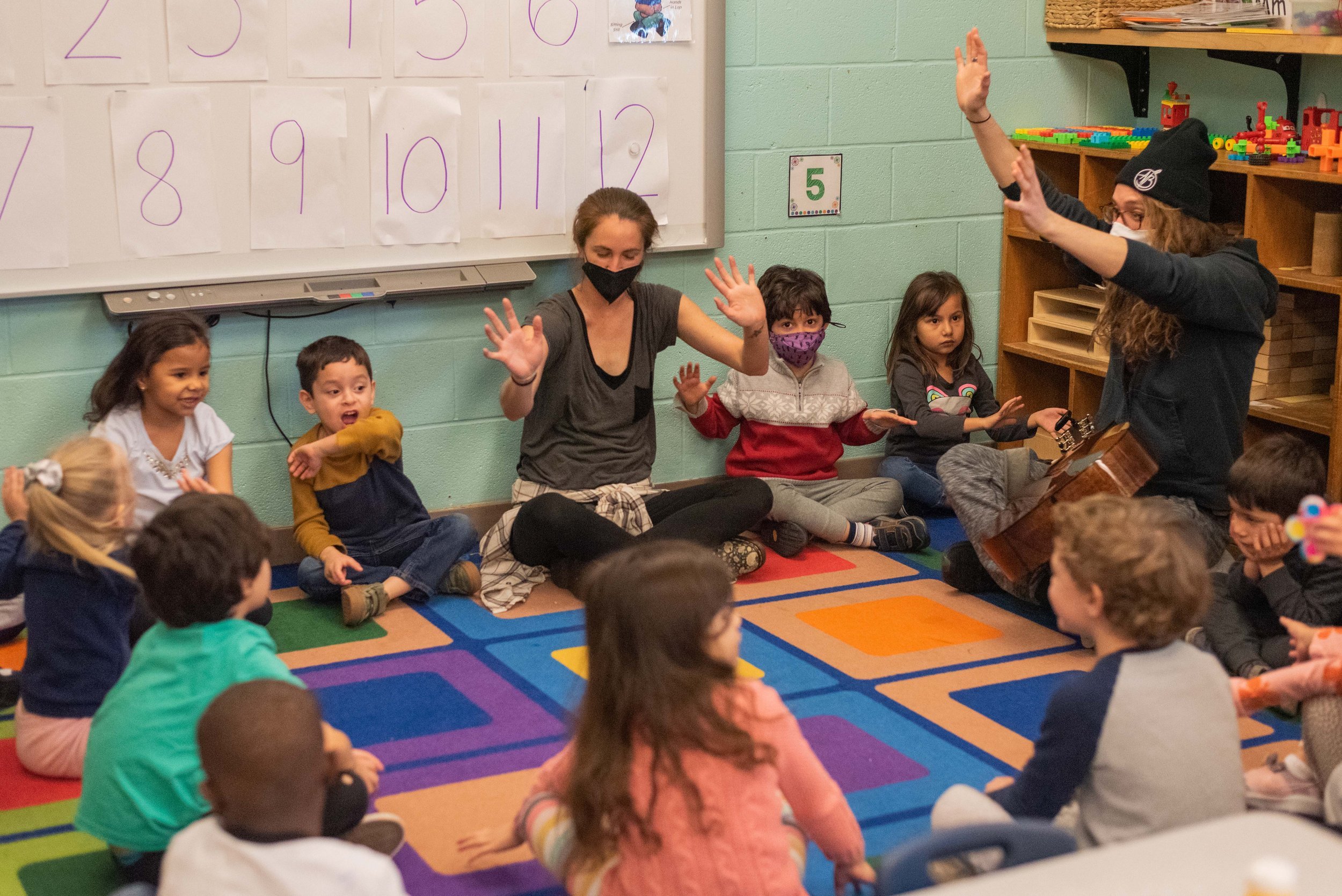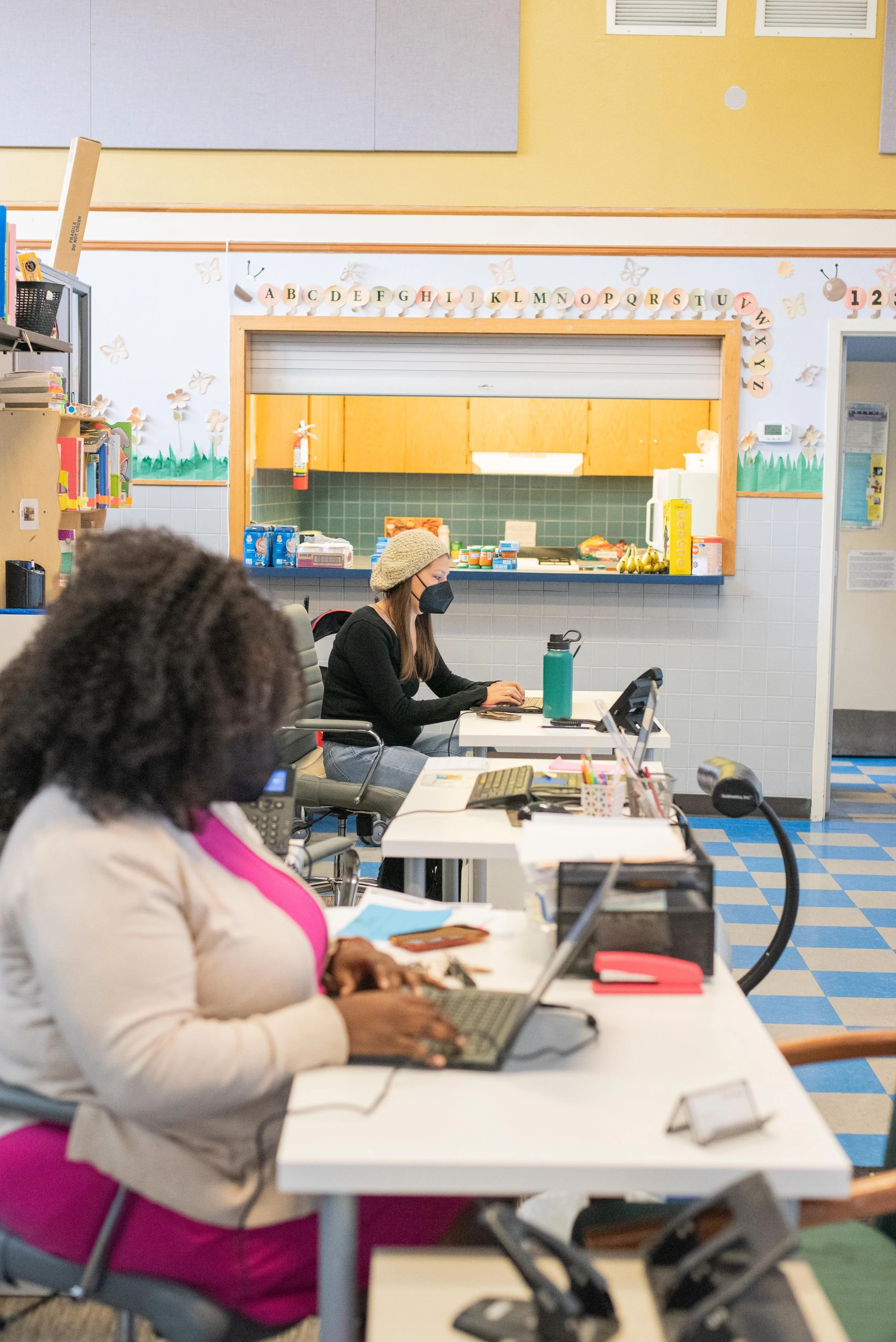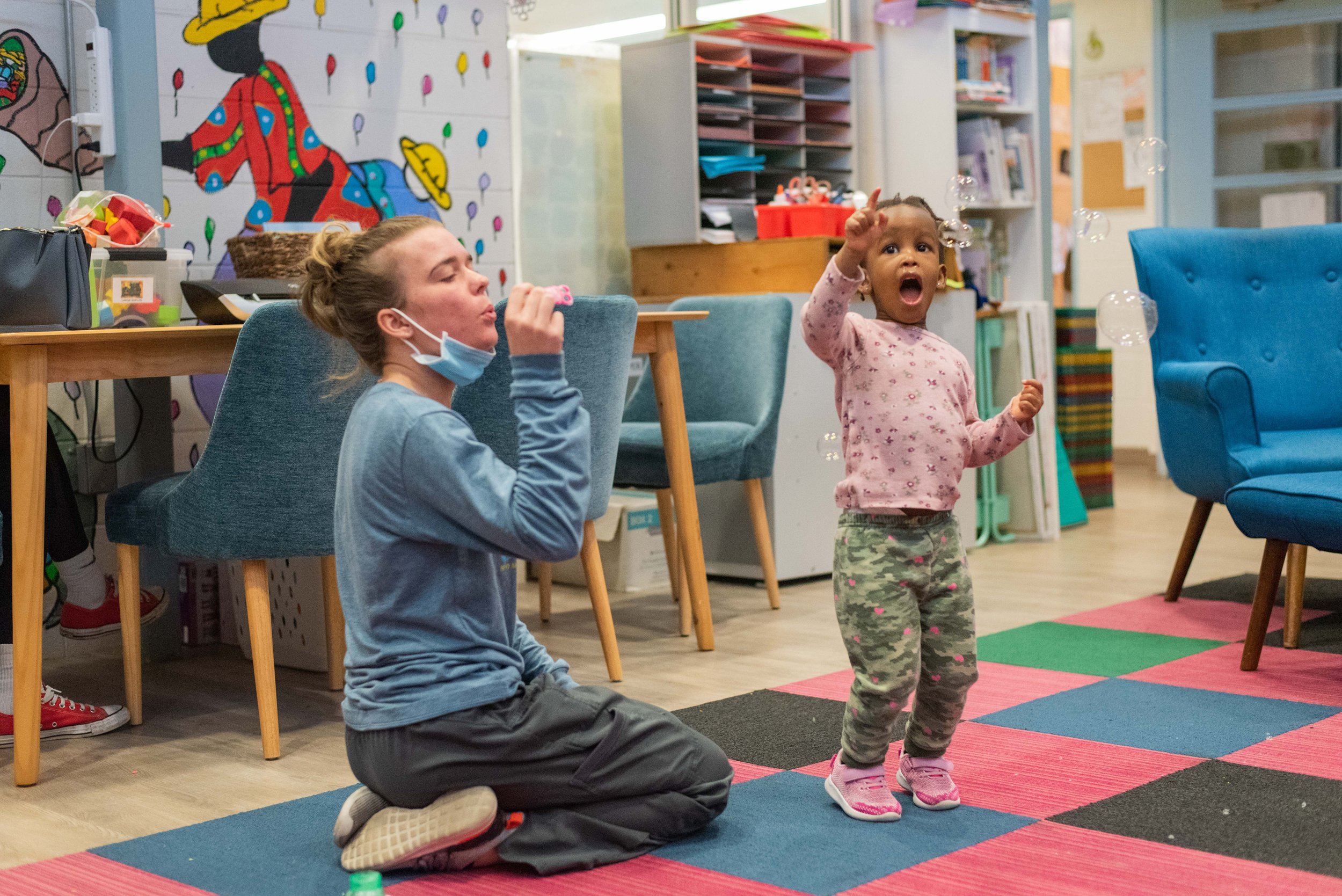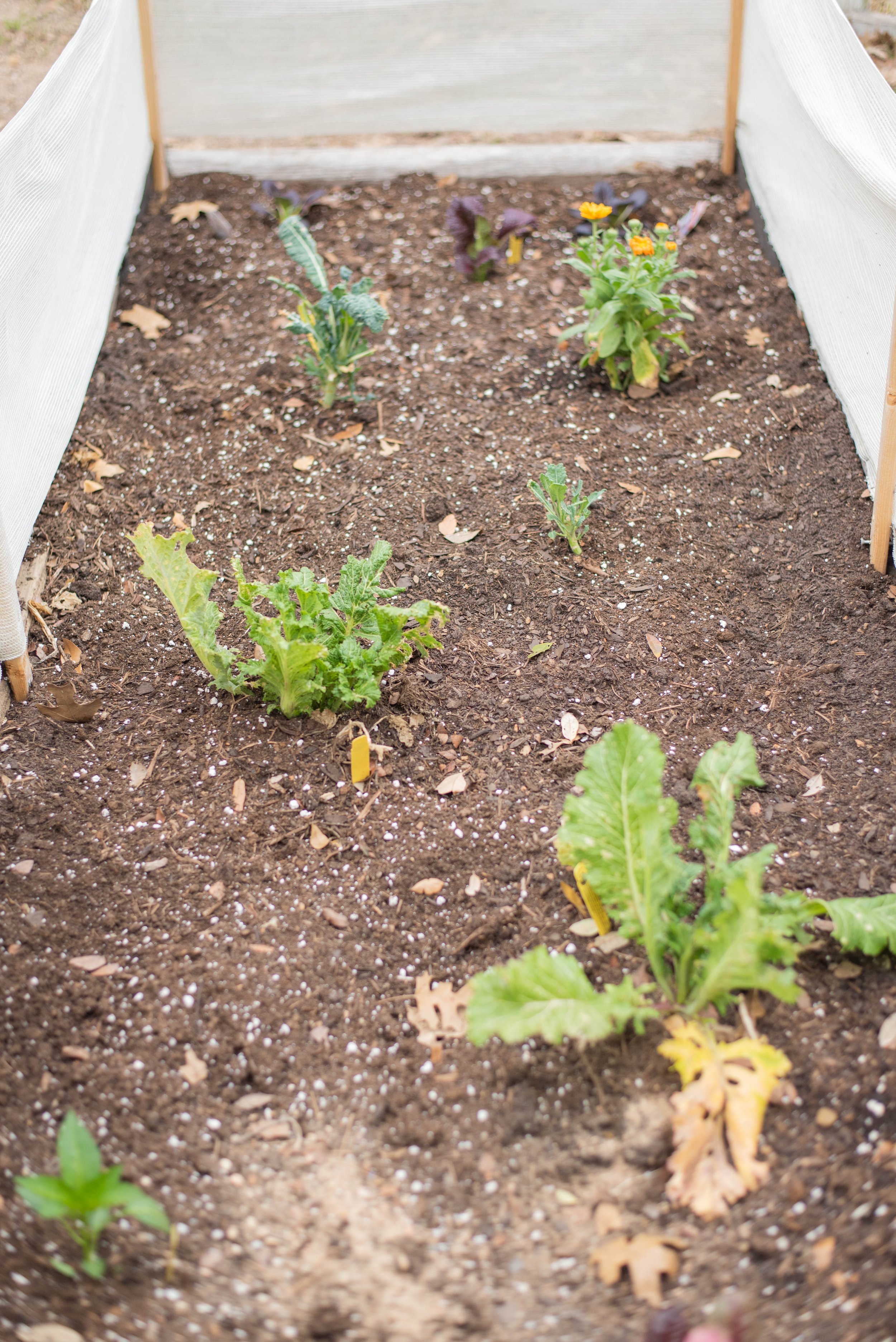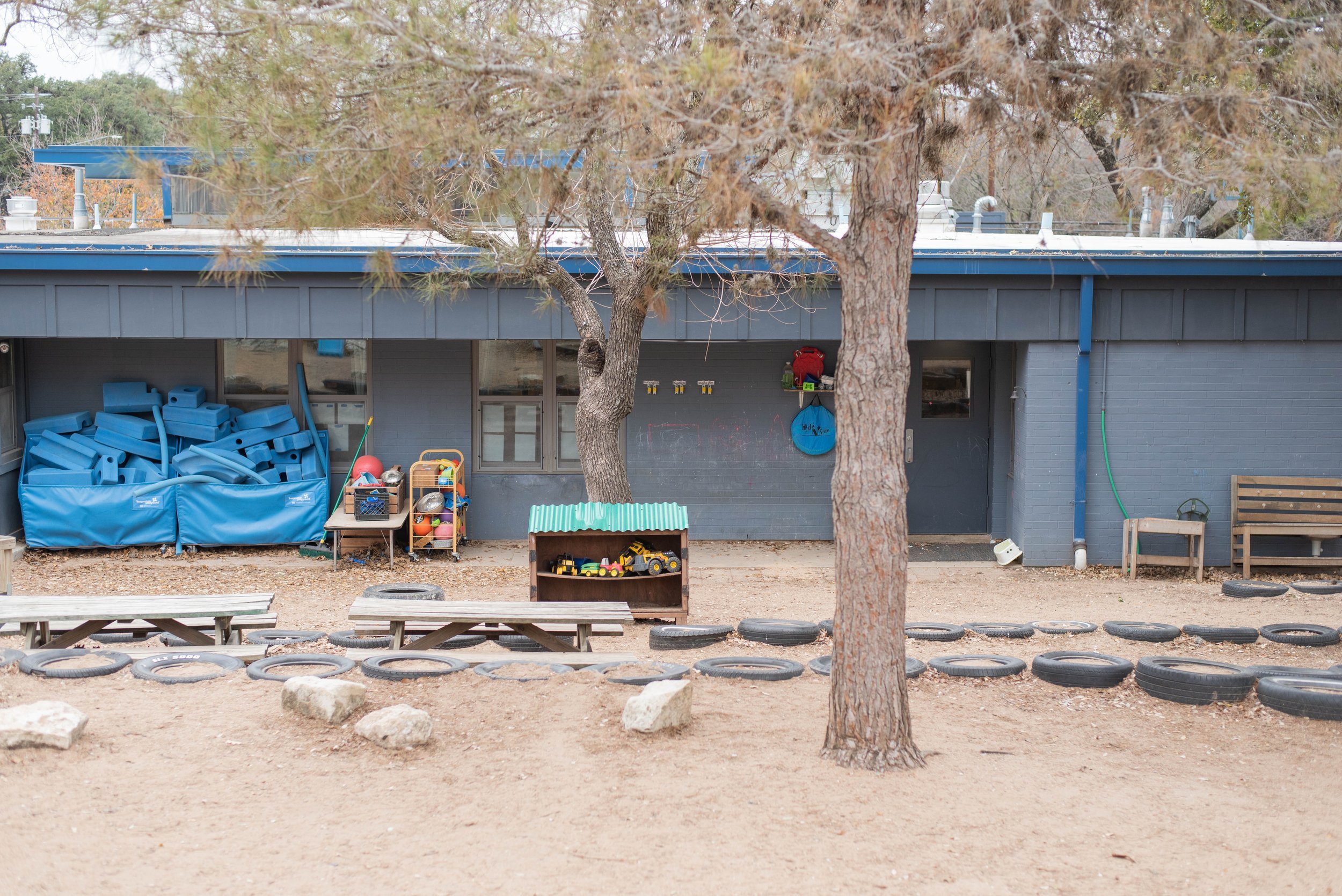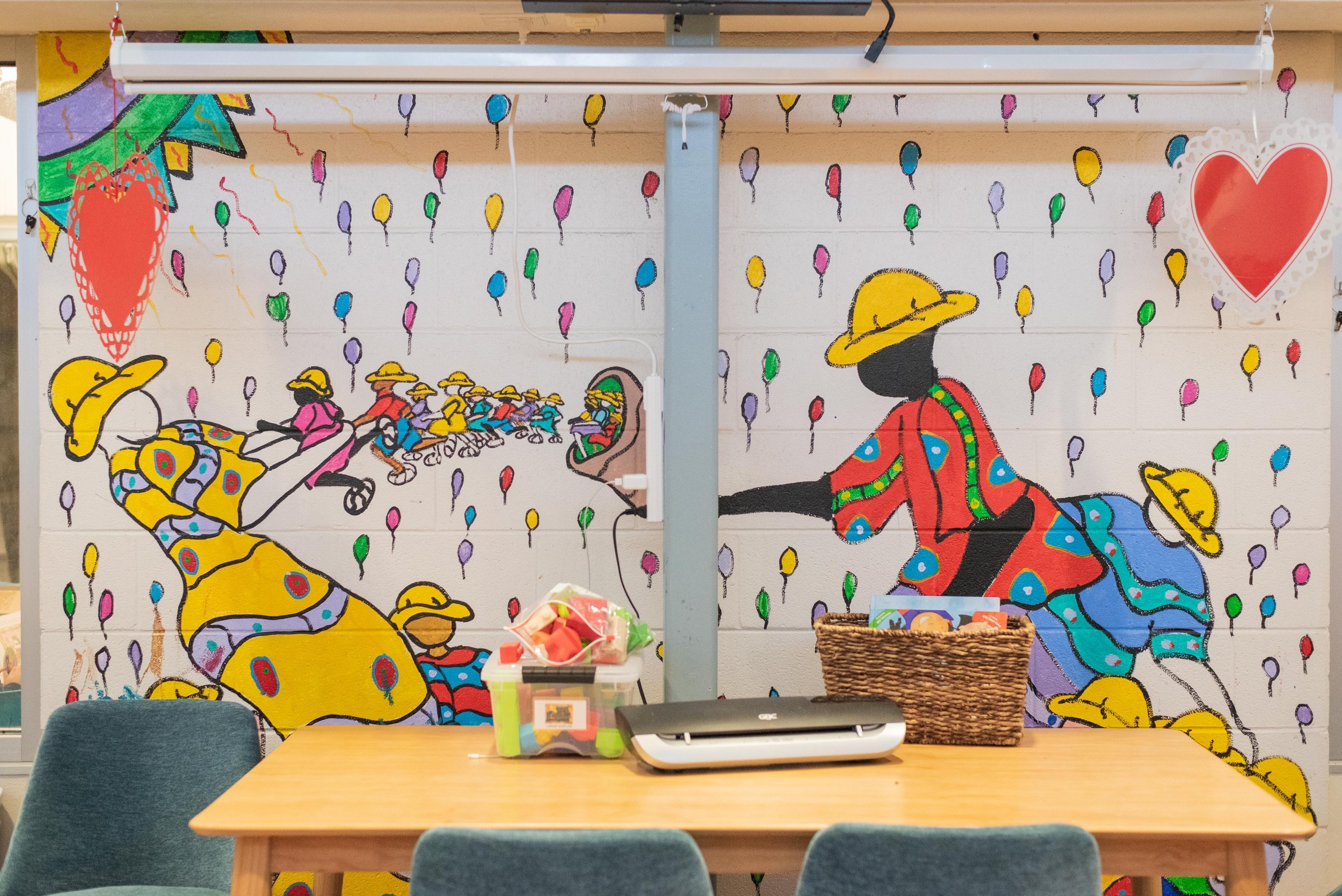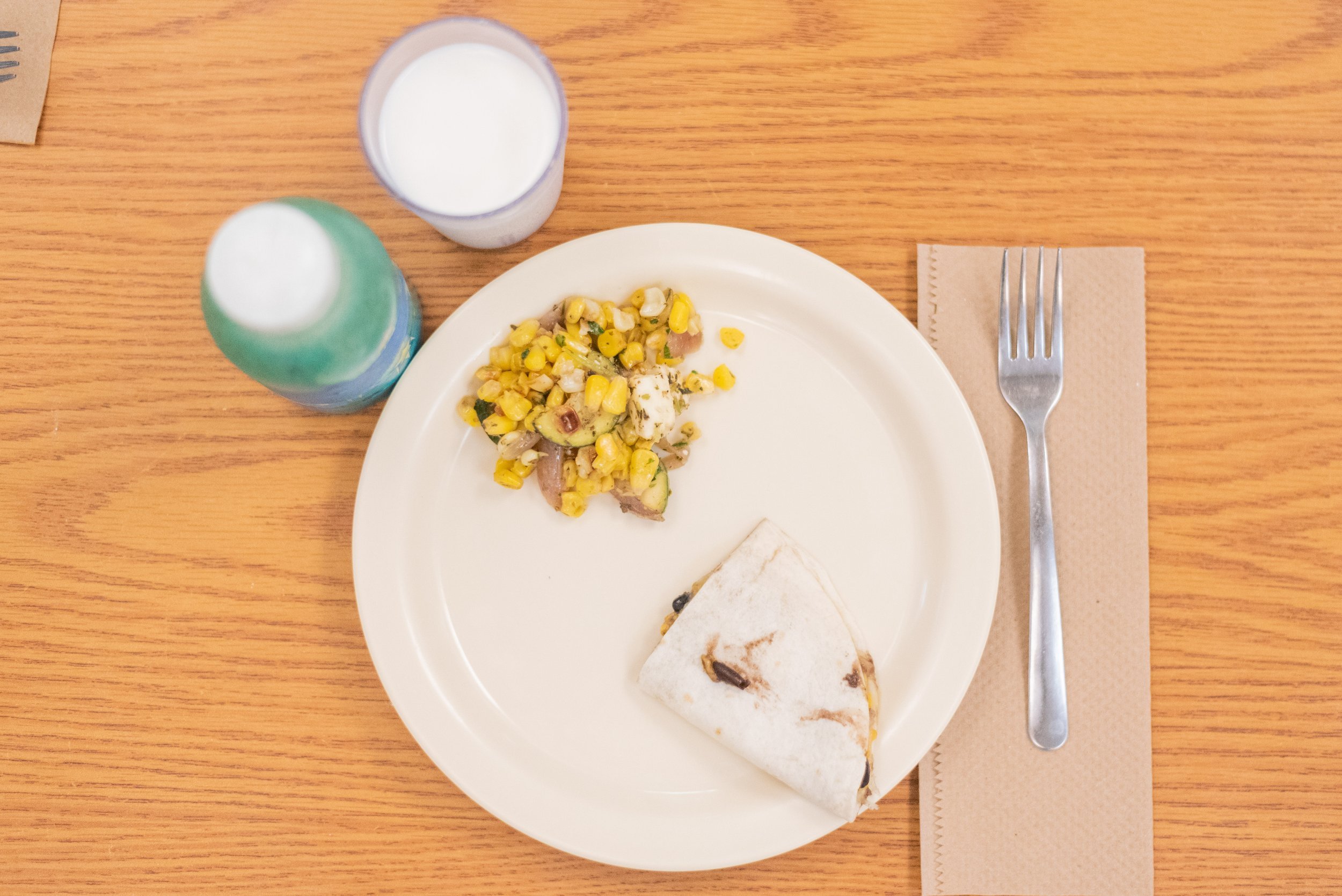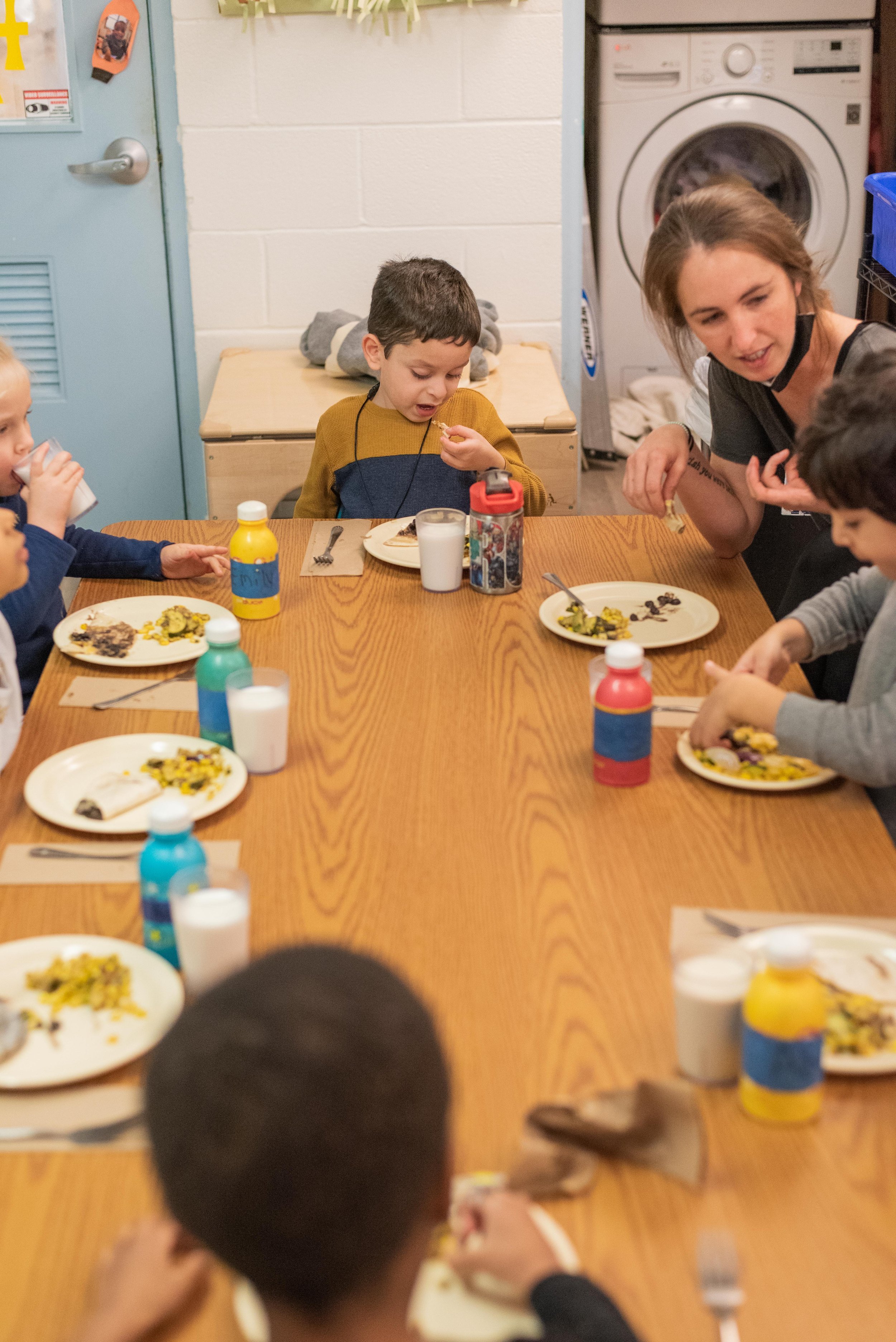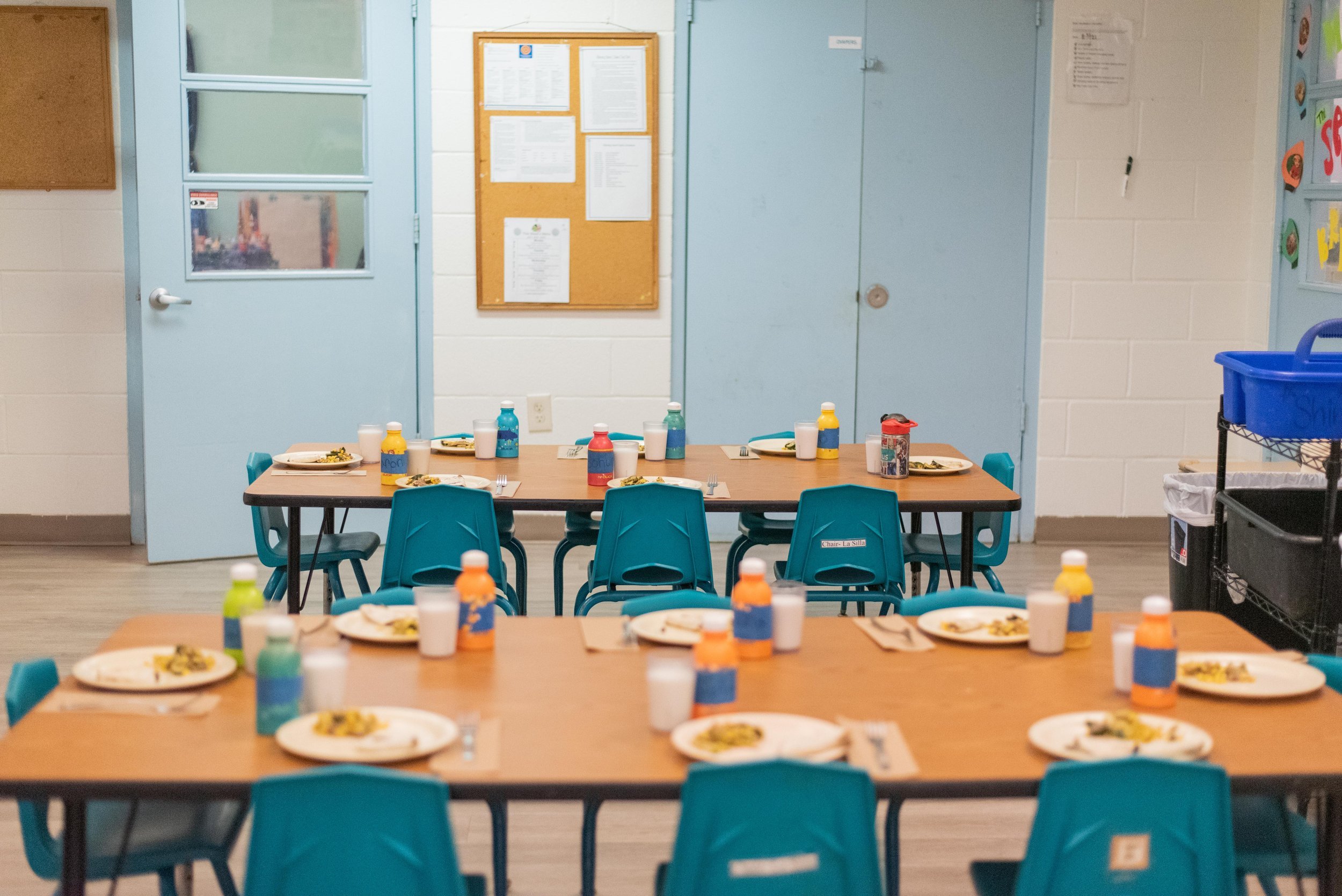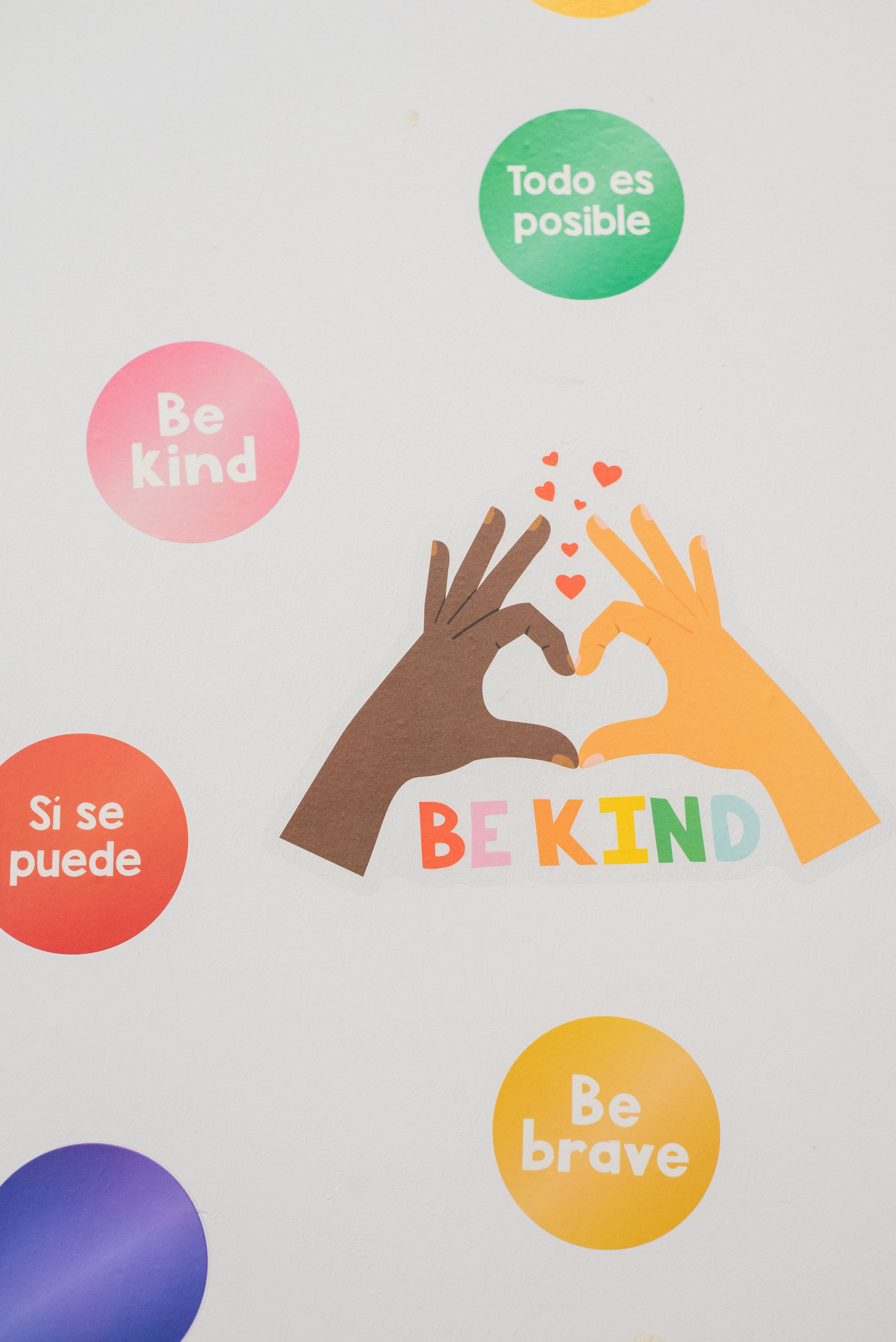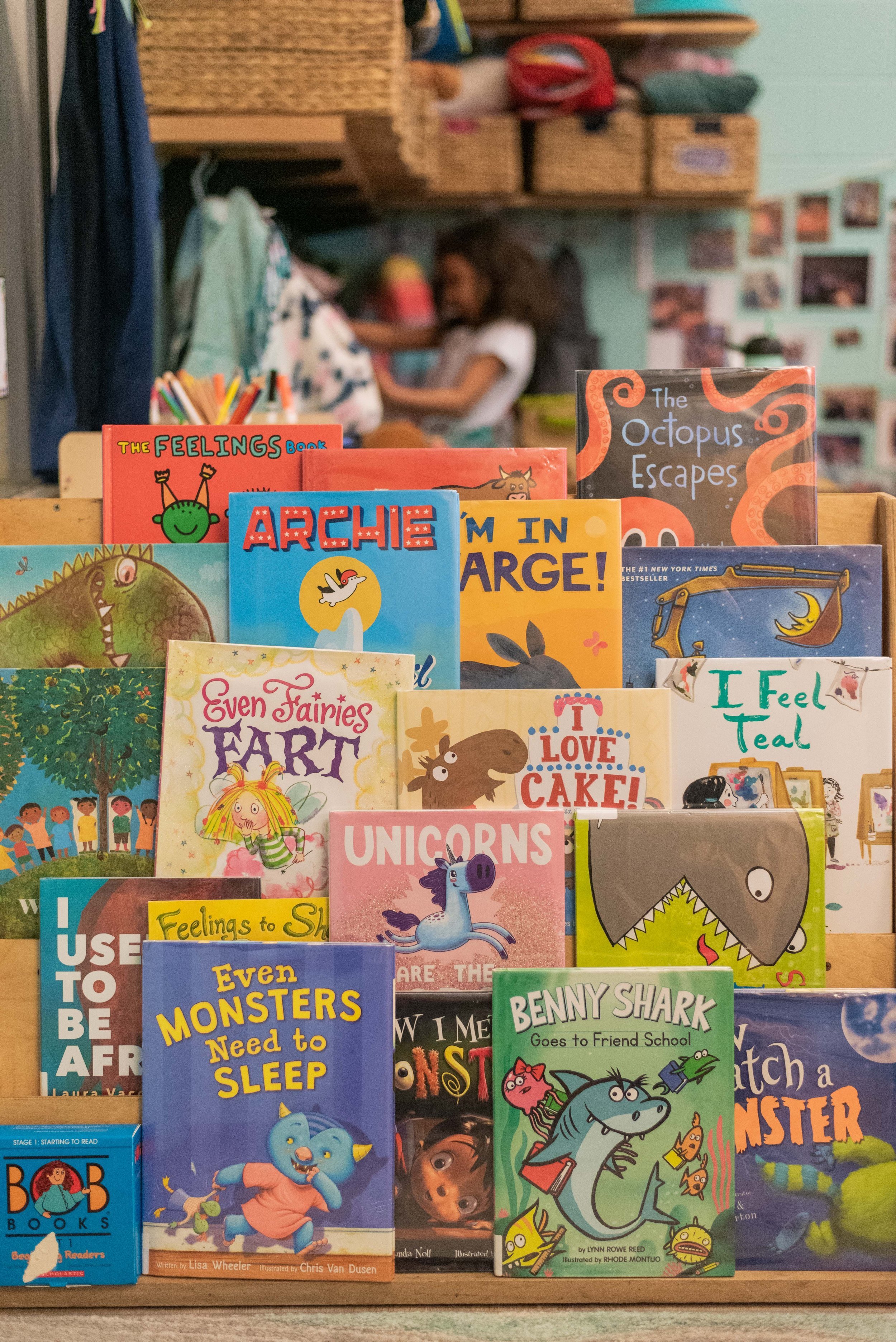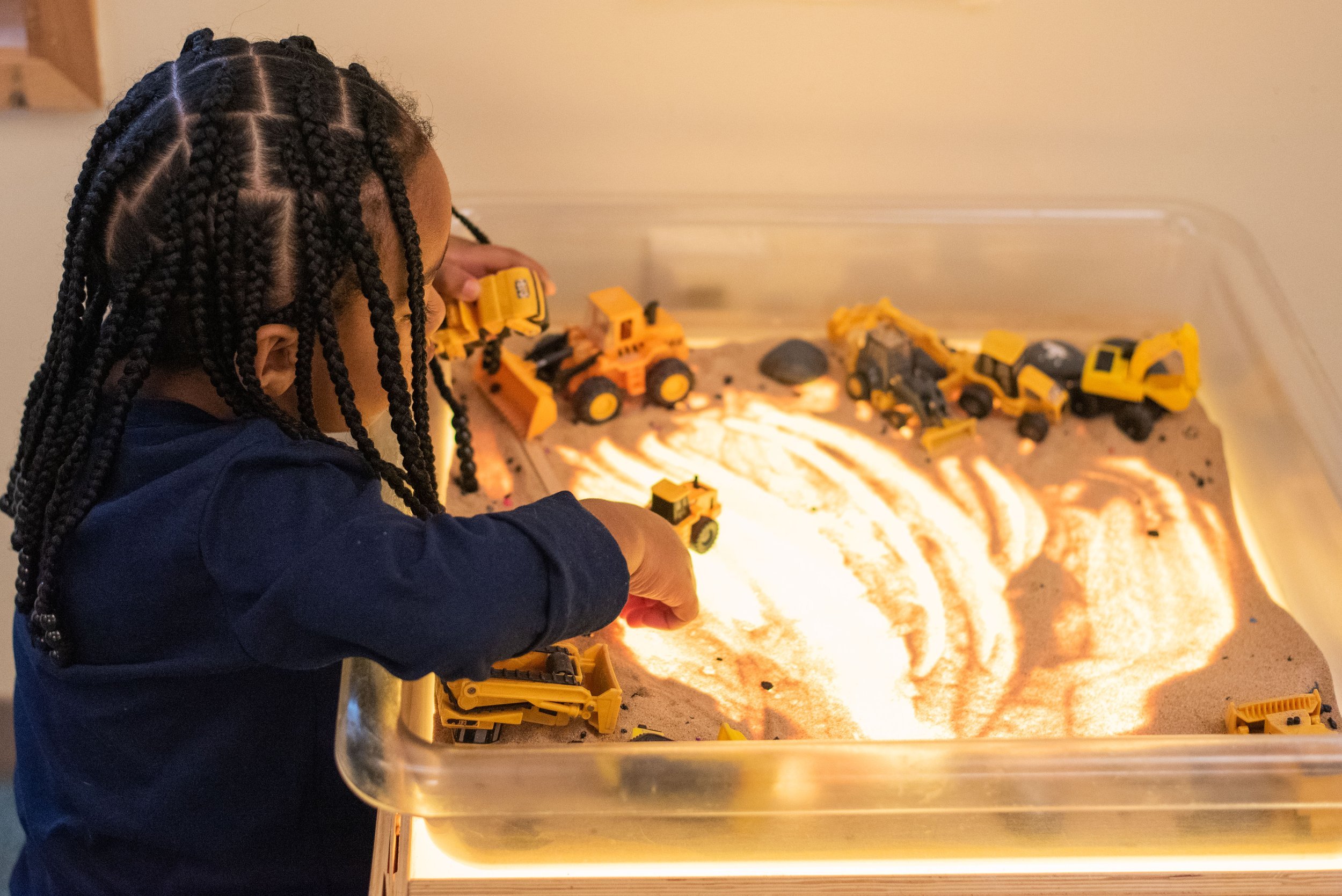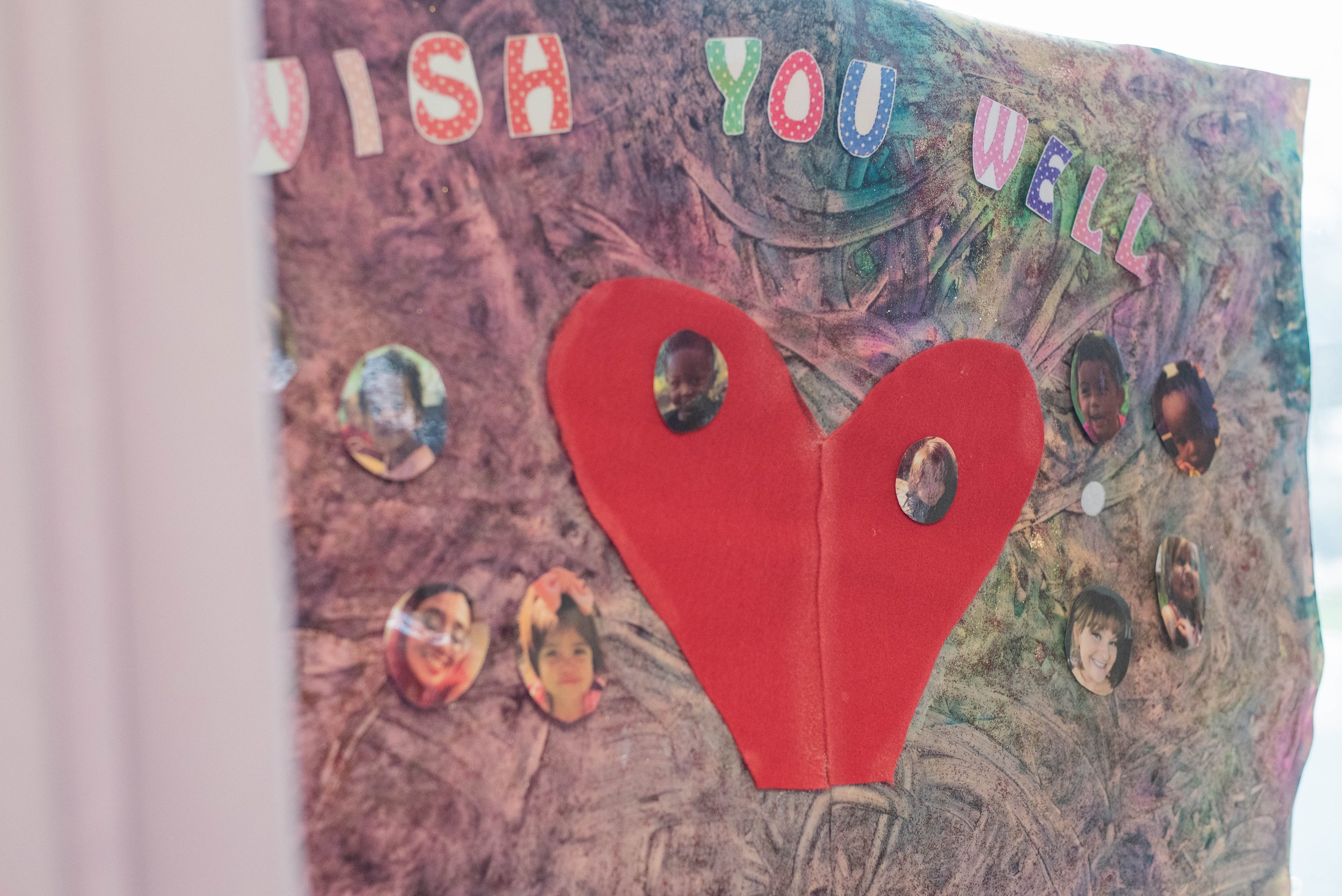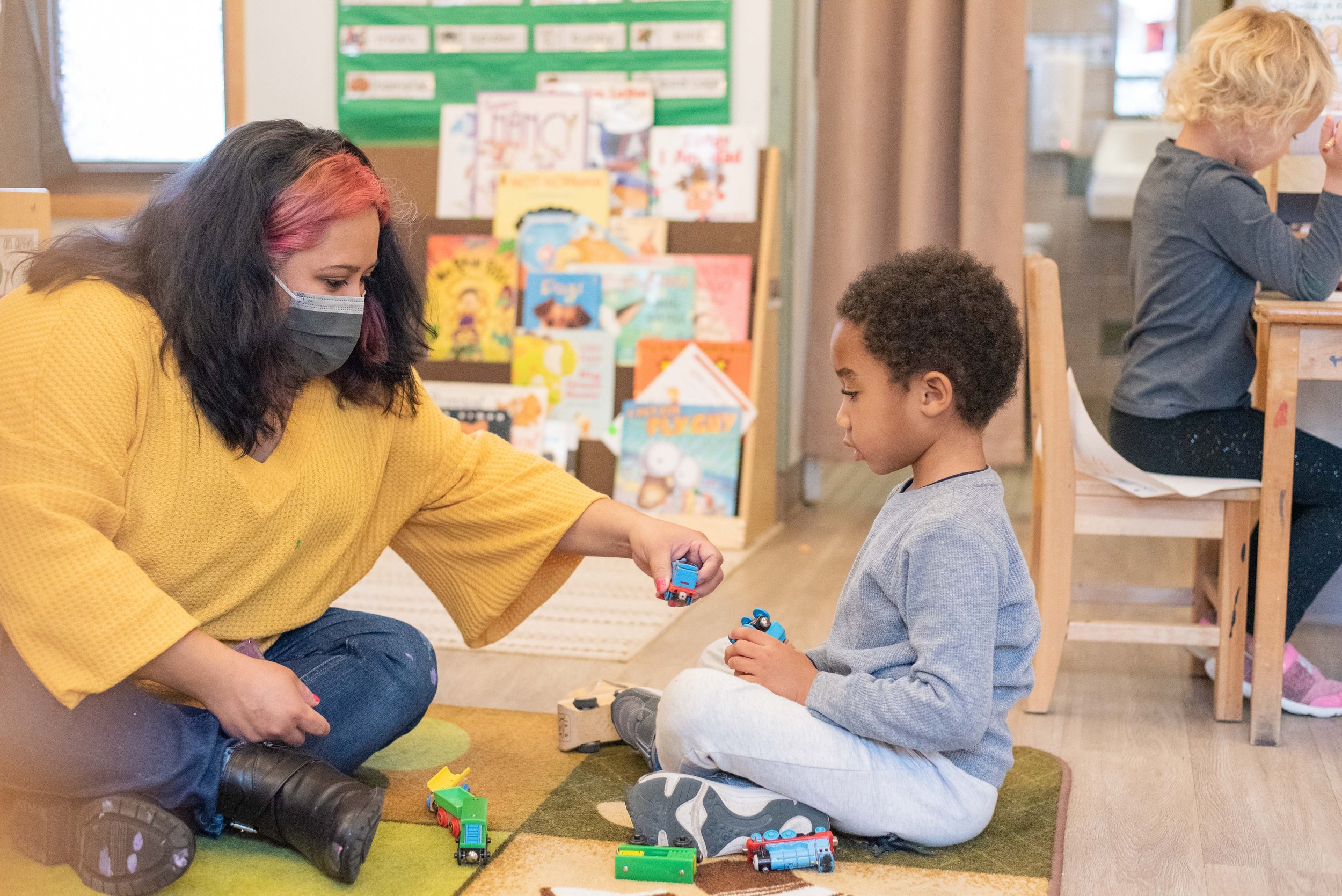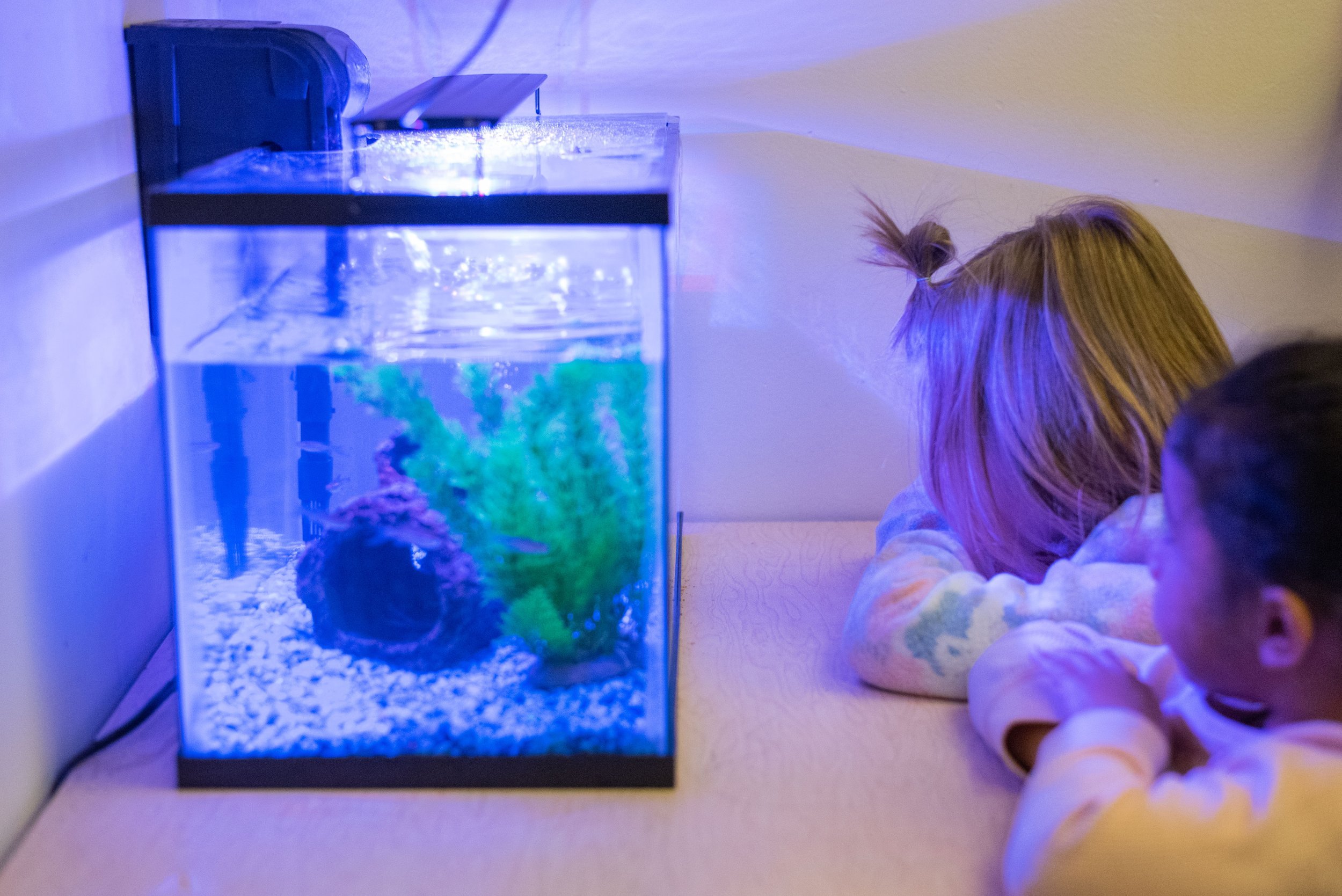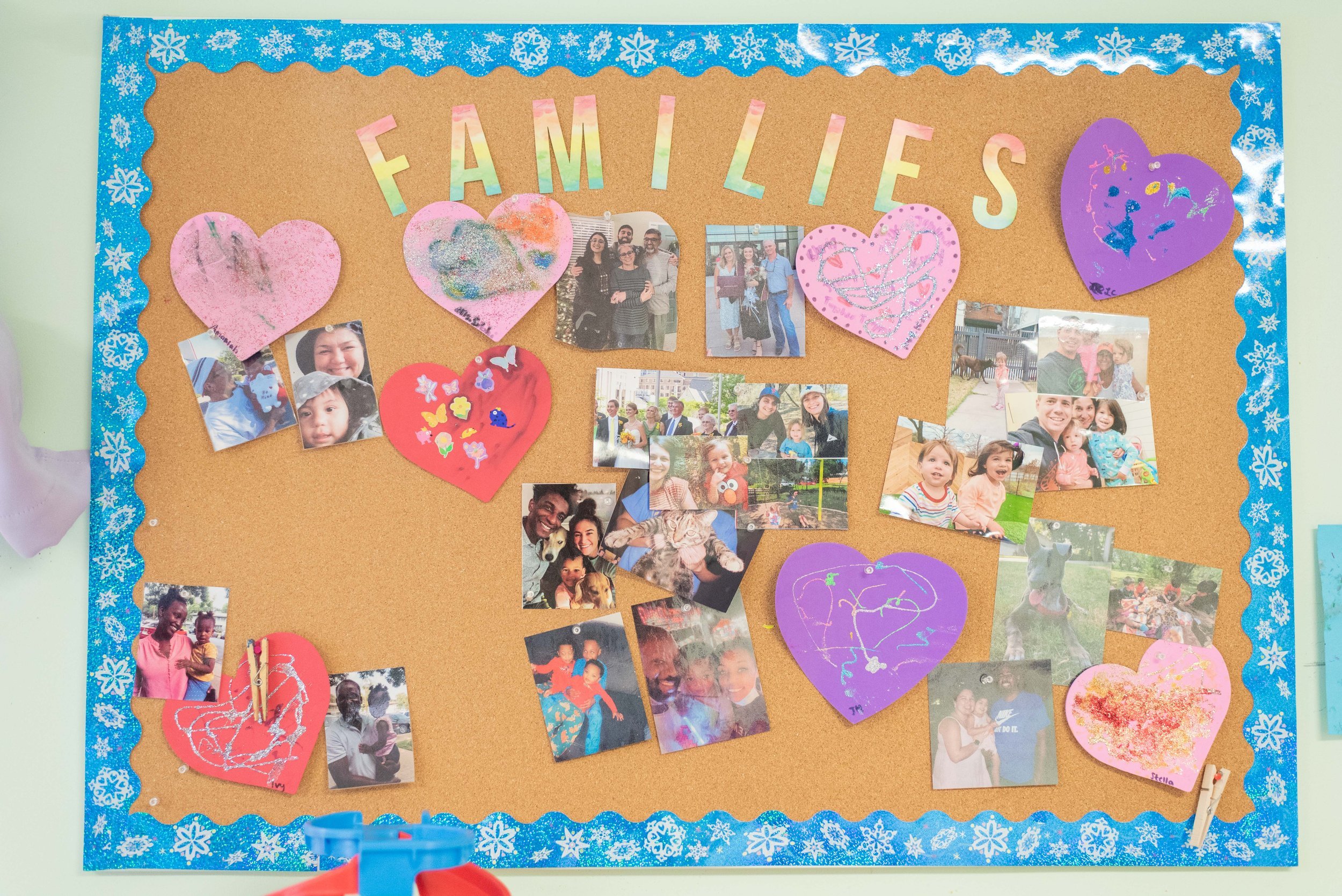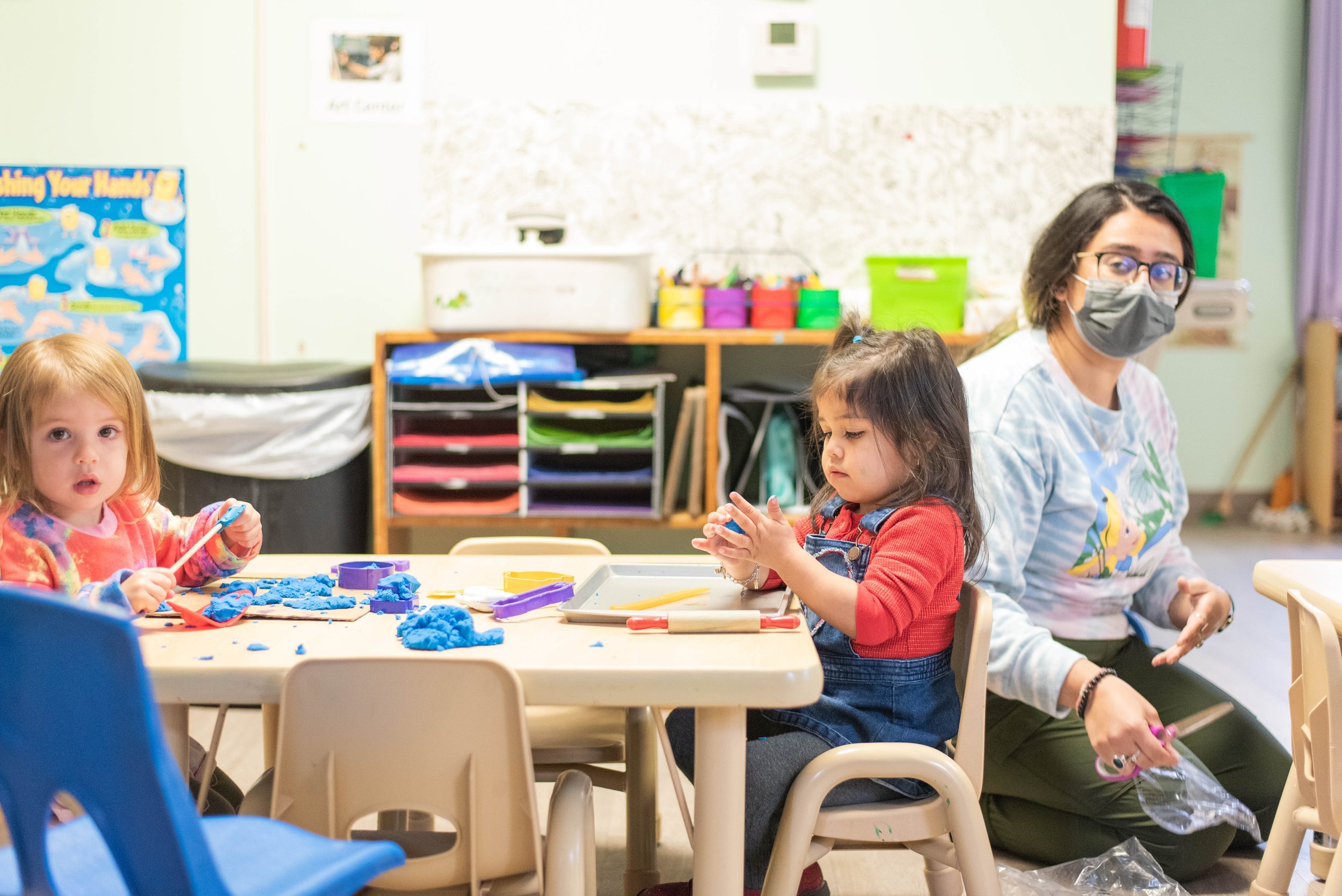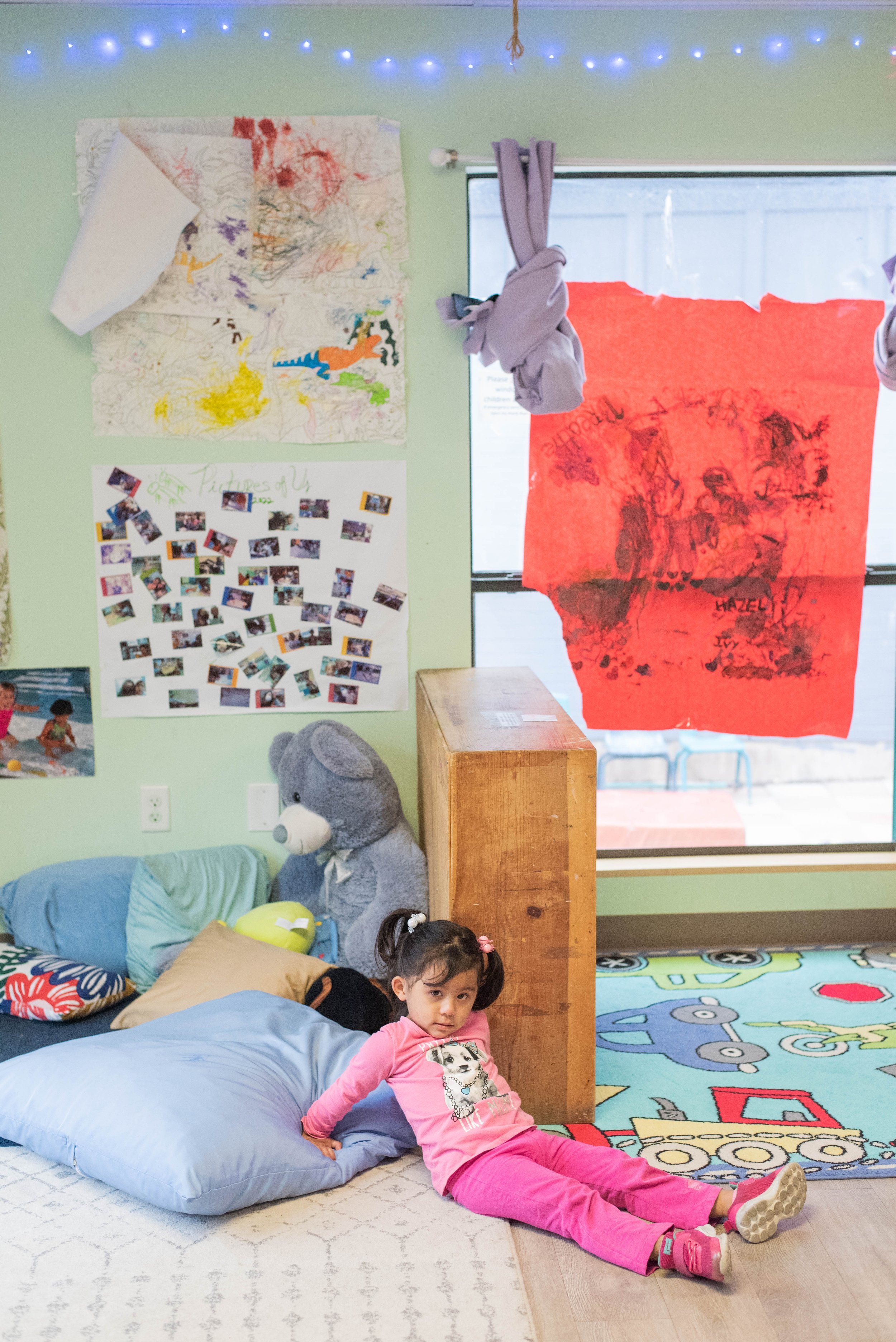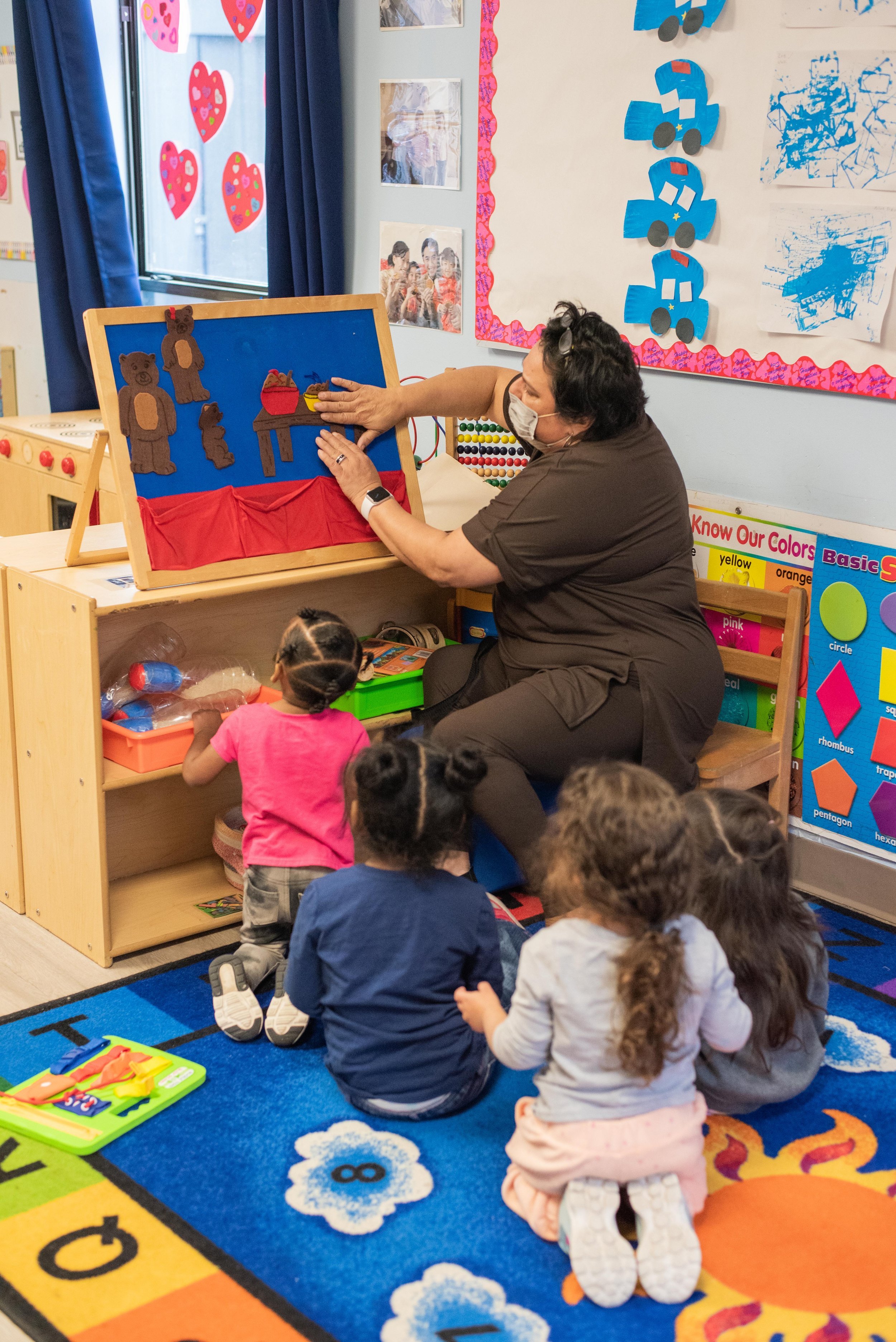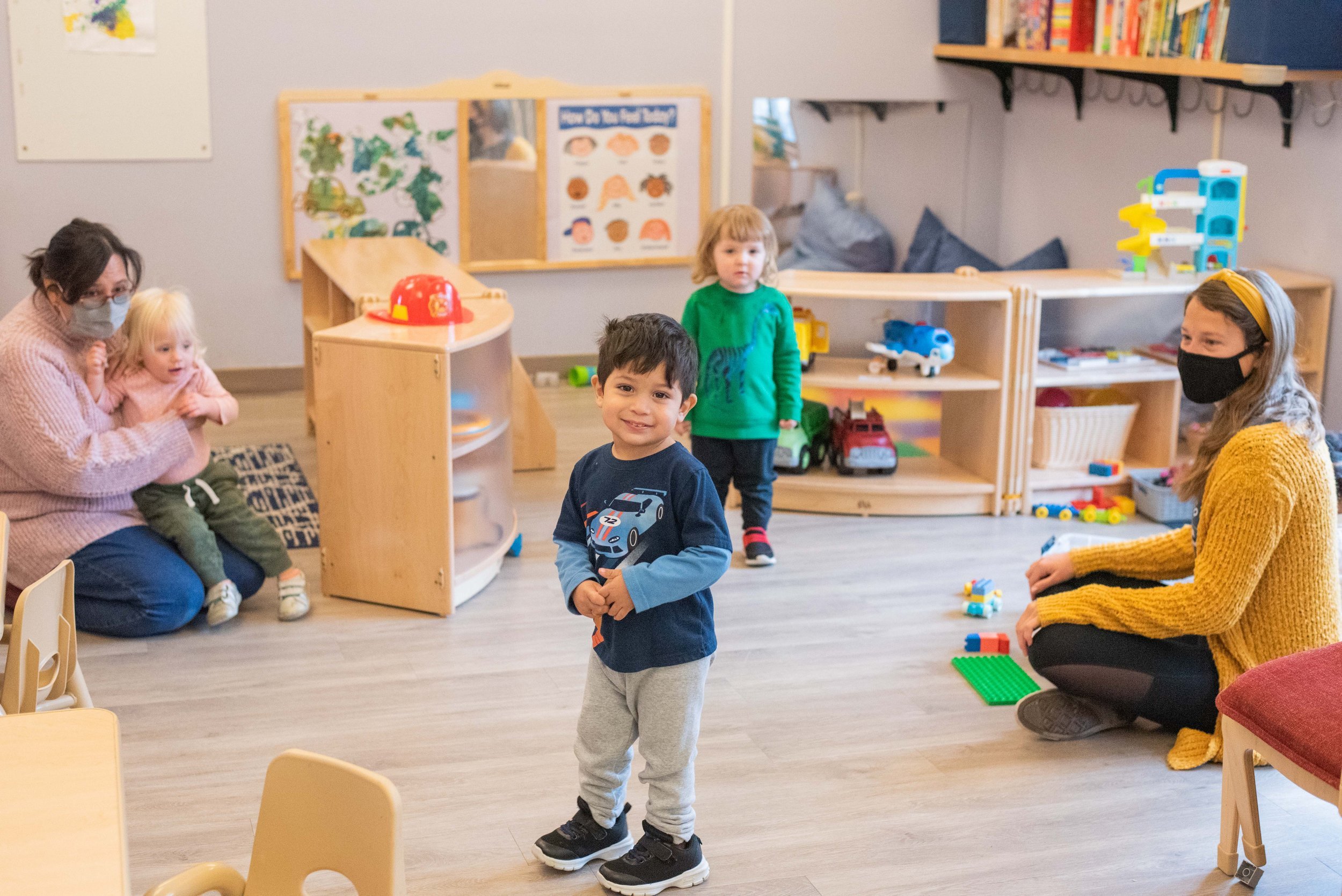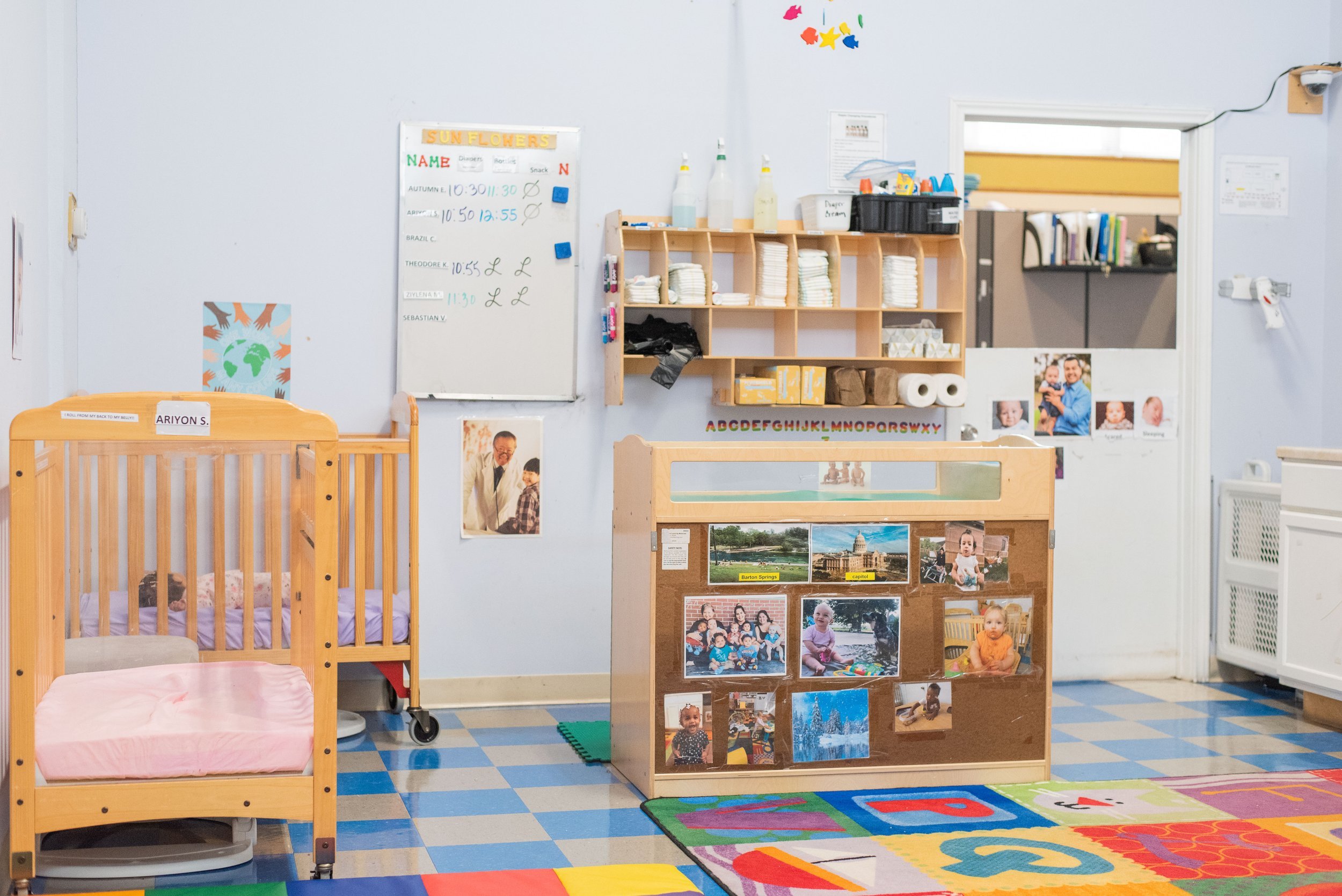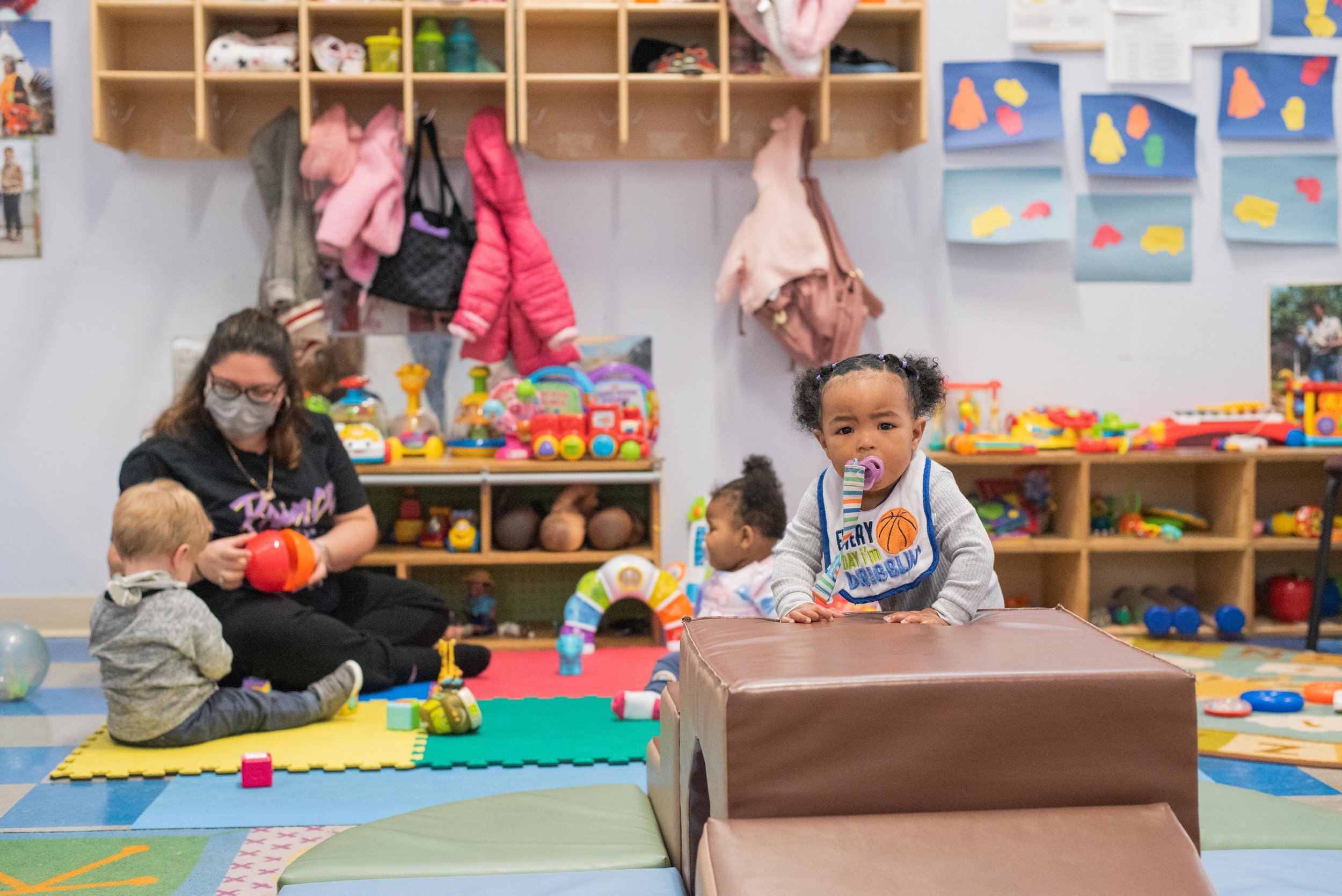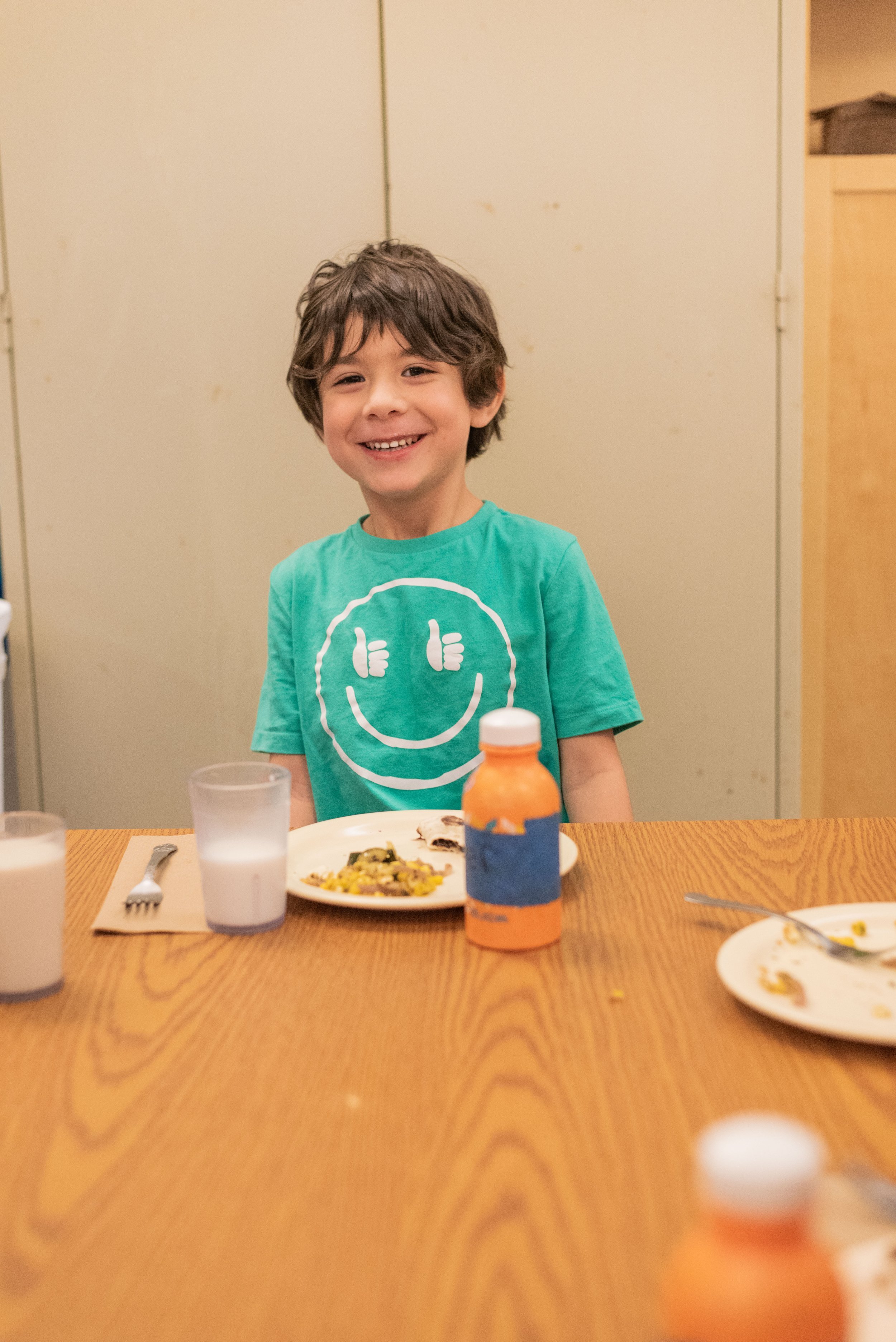Our Classrooms

9 Classrooms
for Children Ages 6 weeks-5 years old
Bluebonnets
Sunflowers
Age: 6 weeks-12 months
Class size: 8 children, 2 teachers
The first year of life is an amazing thing to watch and be a part of! We have two infant classrooms and our teachers work to create strong attachment bonds with the children so they feel safe, especially with our youngest ones. Once the bond is created, the true learning can begin. A ton of cognitive development is happening at this age as they begin to navigate the world through their sensory experience. We strive to provide for our infants not only their basic needs of food, cleanliness and love, but also music, laughter, eye contact, rich vocabulary and praise.
Age: 1-2 years old
Class size: 8 children, 2 teachers
For part of this year, the children in these two classrooms are still considered infants. However, now they are walking and more able to choose their own activities, so we change the room around a bit. We will begin to introduce more activities and skills that encourage autonomy while in these rooms. Namely, they will begin sitting in a normal chair at a table and work on using utensils. We don’t expect children of this age to share, but we talk about the concept. Children at this age will still vie for adult attention, which can lead to conflict, so the caregivers make every effort to proactively arrange the room and their schedule to keep the children busy, happy and healthy!
Dewdrops
Tadpoles
Age: 2-3 years old
Class size: 8 children, 2 teachers
The terrific twos! This is an immensely important year for our children’s social, emotional and cognitive development. They are beginning to use simple phrases to express more complicated desires and observations during this time, as well as initiating conversations with other children. In these two classrooms, we like to encourage this use of language by narrating our own actions throughout the day and describing what the children are doing with an elevated vocabulary. The twos are also making major leaps towards autonomy, namely toilet training, as well as serving, feeding and dressing themselves. As they become more comfortable with themselves, they then begin recognizing the individuality of others and start experimenting with cooperative play.
Honeybees
Grasshoppers
Age: 2-3 years old
Class size: 12 children, 3 teachers
The terrific twos! This is an immensely important year for our children’s social, emotional and cognitive development. They are beginning to use simple phrases to express more complicated desires and observations during this time, as well as initiating conversations with other children. In these two classrooms, we like to encourage this use of language by narrating our own actions throughout the day and describing what the children are doing with an elevated vocabulary. The twos are also making major leaps towards autonomy, namely toilet training, as well as serving, feeding and dressing themselves. As they become more comfortable with themselves, they then begin recognizing the individuality of others and start experimenting with cooperative play.
Mockingbirds
Songbirds
Age: 3-5 years old
Class size: 14-16 children, 3 teachers
We call this group the birds because they sing and sing! By this time, they have become much more comfortable with the language and their ability to ask for what they need and want. Now they begin to use their newly acquired language skills to tell stories, express their imagination and engage in social interactions. The children really love using and playing with the language at this age, so we begin to introduce literacy concepts such as alliteration, rhyming, letter names/sounds and syllables. Most of our vocabulary and language comes through the use of open-ended questioning, asking them to explore new ways of expressing their feelings and thoughts.
This is a truly exciting year in a child’s life! By this time our children have tackled most self-care skills and are moving on to more academically stimulating activities. We offer experiences and materials that encourage scientific inquiry and thought throughout the program. Our mission is to help children from low-income families bridge the vocabulary gap by the time they enter public school. The best way to do that is to put them in an environment with teachers that use an expansive, rich vocabulary when speaking with the children and providing a safe space for them to experiment with the language. This, coupled with a strong science and math component, round out our curriculum. The most important aspect of school-readiness, though, is a child’s ability to focus, interact productively with others and use appropriate coping mechanisms. The social and emotional development of our children is our first priority.
Additionally, both of the three year old classes and this classroom are now an official pre-K classroom of the Austin Independent School District through a unique partnership.
Natural Playscapes
Our four outdoor play spaces have been designed to encourage creativity, community, and respect for the environment. By forgoing the use of prefabricated playscapes, we inspire our children to use imagination during play, rather than relying on rote activities prescribed by an overly-structured or rigid environment. Our playgrounds include gardens, trees, grass, dirt, sand, and open-ended toys and materials that encourage sensory engagement, healthy brain development, and physical activity. Children go outside multiple times every day, rain or shine (within reason!), and our teachers are right alongside them at play.
Dragonflies
